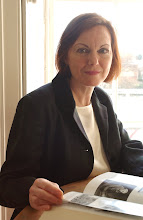 Bloomsbury Day, a celebration of Bloomsbury Past and Present, will be held on Friday 12 March in the Department of English at University College London. During the course of the event, guests will be able to look at the Bloomsbury Project website (although the most interesting features are still password-protected) and at the Bloomsbury People blog. This has now been online since April 2008 when I decided that it would be exciting to find out as much as possible about the ordinary folk of the area as well as the elite who changed Bloomsbury during the 19th century from swampy rubbish dump to a centre of intellectual life.
Bloomsbury Day, a celebration of Bloomsbury Past and Present, will be held on Friday 12 March in the Department of English at University College London. During the course of the event, guests will be able to look at the Bloomsbury Project website (although the most interesting features are still password-protected) and at the Bloomsbury People blog. This has now been online since April 2008 when I decided that it would be exciting to find out as much as possible about the ordinary folk of the area as well as the elite who changed Bloomsbury during the 19th century from swampy rubbish dump to a centre of intellectual life.I was relying on descendents of Bloomsbury residents to come forward with stories, and that is more or less what has happened over the past two years. Perhaps I could have wished for a few more than the forty features that I have been able to post, but links have been made with some extraordinary families such as the Hornes and the Bartons, and also with South Africa, to where a large number of Bloomsbury residents emigrated in the early 19th century. This in itself deserves a more thorough investigation.
The Bloomsbury Project has another year to run and I am therefore appealing to anyone who has ancestral links with the area, however tenuous these might be, to contact me with your story. The blog has been able to link up members of a number of families as you'll see if you read the story of Sir Rickman Godlee immediately below this one. The Bloomsbury Project has also benefited from the information given by the families. Together we hope to reconstruct the area as it existed in all its vibrancy between 1800 and 1904.



